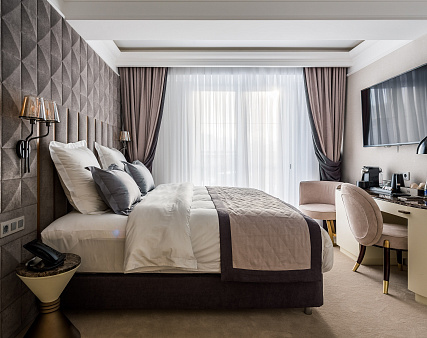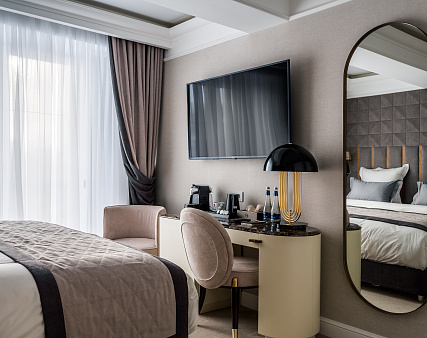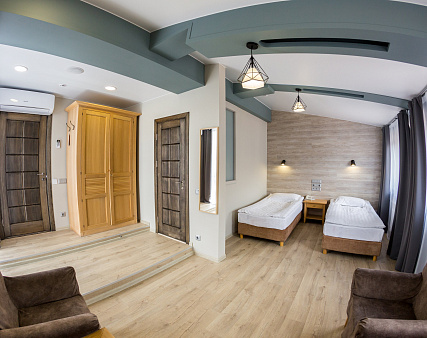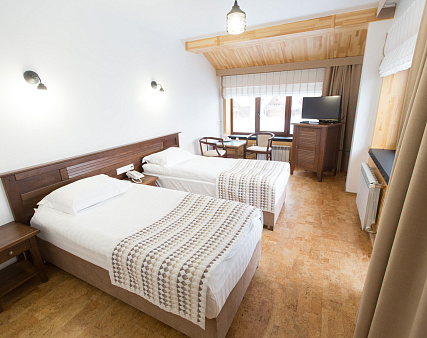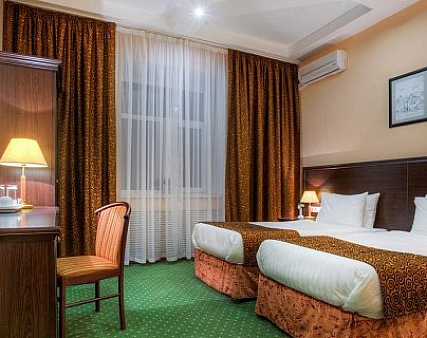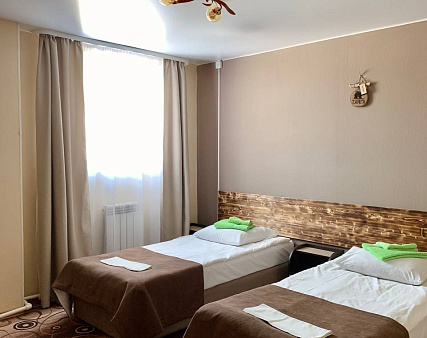Dates:
11 March 2024 — 18 March 2024
Number of days:
8
Route:
Ulan-UdeIrkutsk
Ship :
Ship Category:
Wildlife
Price:
Description
Cruise description
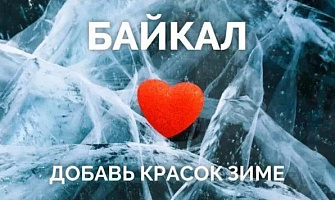 Video review
Video review Route
Ulan-UdeIvolginsky datsanTarbagataiUlan-UdeSteppe Nomad ethno-complexUst-Barguzin villageBarguzin bayChivyrkuisky bayThe deepest point of Lake BaikalKhoboi CapeMaloye More (the Small Sea)Bays of the Great Sea (Bolshoye Sea)Arctic station on iceOgoy IslandShaman Rock IrkutskTaltsyListvyankaIrkutsk
Ulan-Ude, the capital of Buryatia, is located on a picturesque plateau surrounded by wooded hills. In 1666, Russian Cossacks took a fancy to this place and built a fortified settlement here. Nowadays, Ulan-Ude is a large regional, cultural and economic center with well-developed infrastructure, very interesting museums and colorful sights, reflecting centuries-old history, traditions and religious preferences of several peoples of Russia living here.
- Arrival in Ulan-Ude. Transfer to the hotel. Check-in.
- Breakfast at the hotel.
Ivolginsky datsan is the most famous datsan in Buryatia and an important place of pilgrimage for Buddhists not only in Russia, but all over the world. Ivolginsky datsan is the residence of the head of Buddhists of Russia. It is the largest Buddhist monastic complex and the spiritual capital of the Buddhist Traditional Sangha of Russia. The Ivolginsky datsan monastery complex now consists of ten buildings, including temples, a library, and Russia's only Buddhist university, where they study philosophy and traditional Tibetan medicine.
In the 17th century, Russian Orthodoxy after the Reformation split into the official and Old Believer branches. Old Believers did not want to accept the new rules, they were persecuted and exiled away from the capital cities. This is why so many adherents of the old faith have survived in Siberia and still live by the laws and traditions of their ancestors. The culture of the Old Believers of Transbaikalia is recognised by UNESCO as part of the World Cultural Heritage.
You will also meet the locals of Tarbagatai, one of the largest Old Believers' settlements in Transbaikalia. It will be a real journey down the history lane. You will visit the Old Believers' Museum and the Old Orthodox Church, get acquainted with the rites, customs, unique polyphonic singing and the Old Russian cuisine. You will get acquainted with Old Believers' folklore culture, participate in master class on cooking food in the Russian oven, try spinning, visit the house-estate, the Museum of Old Believers' Culture and Life and the Old Orthodox Church.
- Departure for the excursion program in the Tarbagatai Old Believers' village:
- Transfer to Ulan-Ude.
- Visit to the Museum of History, Culture and Life of Old Believers of Transbaikalia.
- Visit to the St. Nicholas temple of the Russian Orthodox Church.
- Lunch (dishes based on ancient recipes of local Old Believers in one of the most beautiful villages in the country).
- Transfer to Ulan-Ude.
- Dinner at the hotel.
The city center of Ulan-Ude is particularly interesting; it is spread out like an unusual amphitheater on the banks of two rivers – Uda and Selenga. Russian merchant classicism here neighbors with wooden houses richly decorated with carvings. Colorful mosaic panels and stained-glass windows with Buryat national ornaments of the buildings convey the carefully preserved traditions. The unusual buildings of the Buryat Drama Theater and the Opera and Ballet Theater stand out among the cultural attractions. There are world "celebrities" in Ulan-Ude, too – one of the most recognizable monuments of the city in the form of a huge head of Lenin not only became the biggest head of the country leader in the world, but also won several prestigious international awards, including the World Exhibition in Montreal.
- Breakfast at the hotel. Check-out.
The Steppe Nomad ethno-complex is situated in the picturesque setting of the Atsagat Valley at the foot of the sacred Tamkhita Mountain, on top of which the villagers of Atsagat perform a rite of veneration for the local masters. Guests are welcomed with a traditional rite of welcoming "Ugtamja" with Khadak, a symbol of hospitality of the Buryat people and white food, a symbol of prosperity and pure thoughts, a melodious song and welcoming speech. At the ethno-complex you will get acquainted with traditions, culture and way of life of Buryats, will play national games, visit real felt yurts, learn how to cook real juicy "buuz", plunge into countryside life of modern Buryats. Visit the unique "World in Faces" gallery. Lunch at "Stepnoy Kochevnik" cafe (Buryatian traditional cuisine: bouzy, soup with home-made noodles, Buryat pastry for dessert, tea with milk).
- Bus transfer to the Steppe Nomad ethno-complex with lunch (Buryat national cuisine).
- Dinner.
- Transfer to Ust-Barguzin.
- Check-in to the Baikal Breeze guesthouse.
- Free time (Russian sauna service (extra charge)).
Today you'll get acquainted with the sights of the Barguzin bay. Barguzinsky and Chivyrkuisky bays are separated by the Svyatoy Nos (Holy Nose) Peninsula. It is a narrow mountain massif, which stretches for 53 kilmeters along the shore of Lake Baikal in the form of a giant nose.
In winter, the Chivyrkuisky bay is one of the first to freeze over. It is just in winter that you have a unique opportunity to see the incredibly beautiful icy rocks of Baikal and to breathe in the freshest frosty air. In one of the wind-protected cosy places we'll have a picnic in the best Siberian traditions - with freshly caught omul, lingonberries and hot herbal tea. Right on the shore of the bay there are famous thermal springs in Baikal. Their temperature is about +40°C to +45°C. The water is hydrogen sulphide, has healing properties and is used for diseases of the musculoskeletal system.
- Breakfast at the guesthouse.
- Departure for the excursion program:
- Visiting ice caves, hiking.
- Visiting hot springs in Zmeinaya Bay (there will be a chance to swim).
- Lunch at the camp
- Return to Ust-Barguzin.
- Free time (Russian sauna service, swimming pool (extra charge)).
- Dinner.
The Olkhon Gate connects the southwestern part of the Maloye More (the Small Sea) to Lake Baikal. The shores of the strait are mostly steep and precipitous, and the coast is divided by long narrow bays and coves. The most prominent bays are located on this mainland.
The Khoboi Cape is located near the widest place of Baikal, here its width is 79,5 km. If the weather is good, you can see the eastern shore from the cape – the mountainous contour of the Svyatoy Nos Peninsula. In Buryat language "Khoboi" means "fang" – cliffs abruptly dropping into the water resemble fangs. The main rock of the cape is called Maiden, as it resembles the outlines of a woman's body. The place is notable for the multi-voiced echo that echoes off the monolithic rock.
- Breakfast at the guesthouse.
- Hovercraft transfer to the Khoboi Cape.
- Lunch on the ice in a traditional yurt on the ice.
- A walk along Khoboy Cape, Baikal kiss ceremony.
- Hovercraft transfer to the recreation centre.
- Check-in to the Bayar recreation centre.
- Dinner.
Today you will go through the bays with the most beautiful ice on the hovercraft. Here the winds opened a vast area of that magic ice with bubbles and cracks, which Baikal is famous for in winter. In this incredibly beautiful place, you will have a long photo stop. You will have a chance to walk on the Baikal ice and take beautiful pictures.
• Breakfast at the recreation centre.
• Departure for the excursion program:
- Hovercraft transfer to the Arctic station with a photo-stop, visit to the Baikal bays.
- Lunch on the Arctic station.
- Hovercraft transfer to the recreation centre.
• Free time*.
• Dinner at the recreation centre.
*Russian sauna service or ice-skating (extra charge).At the station you will have lunch in Arctic scenery with viewing of photo albums of the early 20th century about polar expeditions. On the territory of the Arctic station there are ice figures, geodetic devices and real Siberian entertainments. You will have a unique opportunity to send a postcard directly from the ice camp!
The whole day will be dedicated to the sights of the Maloye More (the Small Sea). Local nature is no less impressive and fascinating – your photo hunt will be really successful!
There is a small, uninhabited island in Baikal in the Maloye More (the Small Sea) Strait, and it is called Ogoy. The word "Ogoy" comes from the Buryat word, which means "waterless". The length of the island is 2,9 km, and the width is 0,6 km. It is the largest island in the strait between Olkhon Island and the mainland. About a hundred herring gulls nest on the Ogoy Island. There is also an endemic species of vole – the Olkhon vole. The local relict grasses are included in the Red Book. The island has never been inhabited by people, and this has helped preserve unique species of wildlife.
In 2005, a Buddhist stupa or Stupa of Enlightenment was erected on the highest point of the island. The snow-white, three-story structure with a dome and spire became a new symbol of the island. The shape of the island resembles the outlines of a dancing Dakini, where the head and body are clearly visible, and in the heart area of the goddess is a stupa. The Enlightenment Stupa is the main of the eight types of stupas in Buddhism because it symbolizes the main goal of Buddhism: enlightenment.
- Breakfast at the recreation centre.
- Departure for the excursion program:
- Hovercraft transfer to the Ogoy Island.
- Walking tour around the Ogoy Island, visit to the Stupa of Enlightenment.
- Lunch.
One of the most mysterious and popular places on Lake Baikal is the Cape Burhan (also known as the Shaman Rock). The name "Burhan" appeared at the end of the 17th century after Tibetan Buddhism came to the Baikal region. The Buryat Buddhists began to call the main deity of Lake Baikal by the word "Burhan". The cape is made of crystalline limestone with veins of quartz, and the adjacent shore is made of granite rock. The rock is covered with bright red lichens. The height of the near shore part of the rock is 30 meters, the height of the far part is 42 meters.
- Hovercraft transfer to the Cape Burhan.
- Visit to the Shaman Rock.
- Hovercraft transfer to the recreation centre. Check-out.
Irkutsk is a beautiful Siberian city, founded in the 17th century on the banks of the Angara River. Thanks to its good location at the crossroads of trade routes that connect Europe and Asia, Irkutsk quickly became the key city in Eastern Siberia. The Great Tea Road, which carried furs to China and tea, silk, and sugar back, used to pass here. When the "gold rush" began in Siberia, Irkutsk bore the title of a gold mining capital - ingots of gold and gold sand flocked here for sale.
Today we will visit the Taltsy open-air ethnographic museum. Unique monuments reflecting the history and culture of Russians, Buryats, Evenks and Tofalars living on this land. On the territory of the museum, you can see peasant houses and homesteads of wealthy villagers, a tavern, a parochial school, a parish board, blacksmith and pottery workshops, a cascade of watermills on the bank of a mountain stream and a watchtower, once guarding a medieval fortress. All the buildings have been preserved since the end of the XVIII century.
Breakfast at the hotel.
Departure for the excursion program:
- Bus transfer to the Taltsy museum.
- Excursion to the Taltsy museum.
- Lunch.
- Bus transfer to the Baikal Museum (Limnological Museum) in Listvyanka village.
- Visit to the museum.
- Dinner at the hotel.
- Accommodation in a 2-bed standard room in hotels along the route (according to the tariff chosen).
- Three meals a day.
- Excursion services according to the cruise programme.
- Group transfer on the first and last days of the tour (airport-hotel-airport).
- Air and rail tickets to and from the starting point of the tour.
- Additional excursions according to the cruise programme.
- Other additional hotel services.
Price
Discounts
Information
Additional information
Attention! The price and the programme are preliminary and subject to change.































